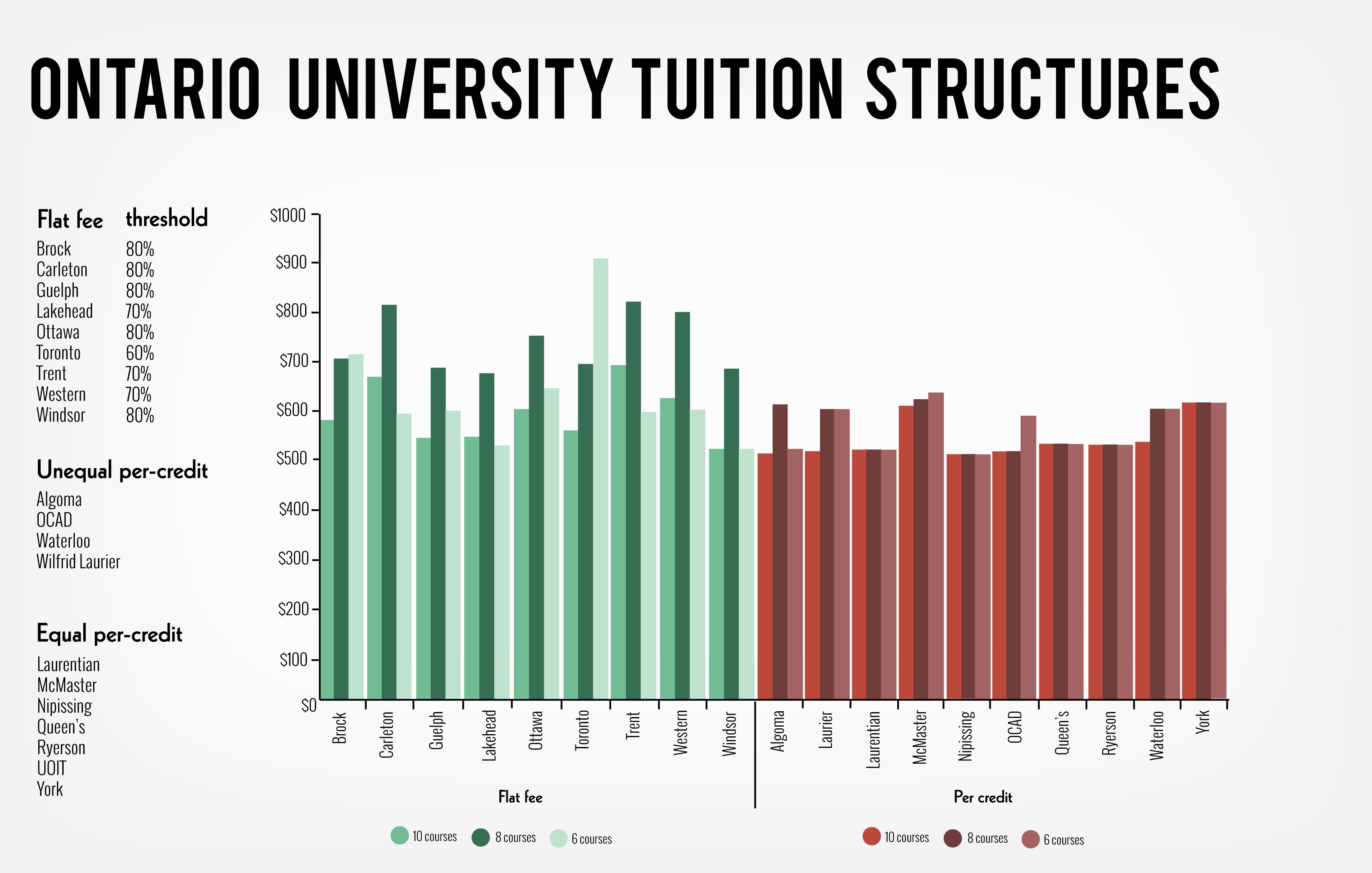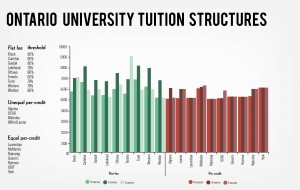Province to evaluate flat-rate tuition billing


The Ontario government may soon be changing the way tuition is administered across the province’s universities.
For nine out of the 20 universities in Ontario, the tuition framework has a much different model than the rest, something known as flat-fee rates.
Flat-fee tuition is the practice where students who are enrolled in a 60 to 80 per cent of a full-time course load are charged a flat program rate.
In this situation, the same tuition rate is applied to all students regardless of the number of courses they enroll in.
This means that students who are taking three classes could potentially be billed the same amount as students who are enrolled in five to seven courses.
“I think students have convinced us for the need for change,” said Brad Duguid, minister of training, colleges and universities. “We’ve indicated that we’ll be reviewing the issue and want to bring in some reforms to flat-fees to ensure that they’re applied in a fair way to students.”
Students have been vocal about their concerns with the tuition framework in Ontario, claiming that students should not be forced to pay for education they are not receiving.
Currently, the nine universities whose tuition policies support a flat-rate model have a “threshold” at which the full-time rate for tuition is charged.
Brock University, Carleton University, Guelph University, the University of Ottawa, and the University of Windsor have an 80 per cent threshold, while Lakehead University, Trent University, and Western University stand at a 70 per cent threshold.
The University of Toronto, however, has the lowest flat-fee threshold in the province at 60 per cent.
In a 2009 news release, U of T stated that they were in favour of this policy because it “guarantees a more predictable revenue steam” and “allows students to take extra credits without incurring additional costs.”
However, some university students strongly disagree with this statement, believing that it is unfair to forget about those who cannot commit to a full course load.
“As someone who comes from a financially-disadvantaged family, I have to work while going to school,” explained Ana Ristovic, a fourth-year criminology student at U of T. “My school requires five credits per year in order to graduate in four [years]; however, since I have to work 30 hours a week, I am only able to balance taking four courses a year.”
She continued, “Due to this policy, I will be paying extra money and it just seems that only students who are well-off enough to be unemployed are the ones who can reap these benefits.”
Another argument in favour of flat-rate tuition explains that this policy incentivizes students to take a full course load, hoping for more “on-time” graduations.
“There is no evidence that this actually does that,” said Stephen Franchetto, the vice president of finance for the Ontario University Student Alliance (OUSA). “We completely disagree with flat-fees, they are terrible in our books.”
OUSA represents undergraduate students in the province, lobbying for student rights and listening to student concerns.
They recently released a report on flat-rate tuition fees, analyzing the cost of tuition, rates and policies.
Speaking about the difficulties flat-rate fees pose to part-time students, Franchetto said, “Those students are the ones with the most difficulty and it makes absolutely no sense that they are the ones that are hit the hardest with the policies.”
OUSA has been lobbying on this issue for more than a year.
However, some students have expressed interest in favour of the policy, mainly arguing that it helps those whose programs require additional credits.
Hilary Canivet, a concurrent education student at Brock University, explained that each year she must take an extra education course on top of her mandatory classes.
“Being in a program that requires you to take more, I would probably end up saving money,” she said. “I prefer a flat-rate.”
Angela Casey, a student at Lakehead University is also in support of flat-rate.
“It’s understandable that the lower course load students feel somewhat gypped, but the grander scale I think is so much more important to get these kids into post-secondary education,” she said, referring to the large amounts of students in the Thunder Bay area who come from low-income families and would not otherwise be full-time students.
Duguid told The Cord that the ministry is currently working on the issue of flat-rate fees.
“We need to strike a balance so when we make changes like this that we don’t severely impact a university’s financial circumstance,” Duguid said. “It’s going to challenge post-secondary institutions.”
“But it’s always challenging because tuition is challenging for students.”

